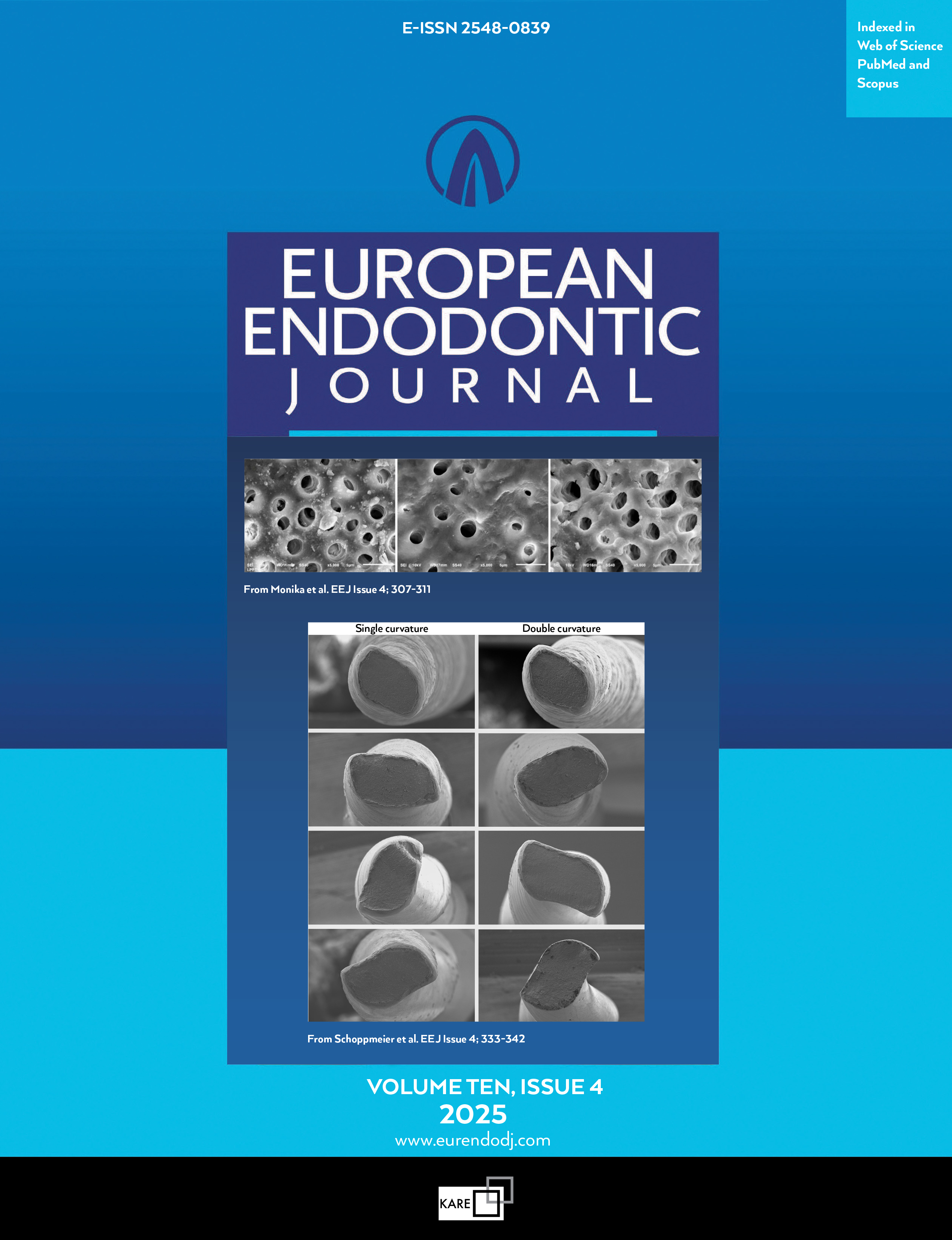Metrics
2024 IMPACT FACTOR
5 year Impact Factor
Eigenfactor Score
2024 CiteScore
Journal Citation Reports
(Clarivate 2025, JIF Rank)
Morphology of Accessory Canals in Mandibular First Molar of a Malaysian Subpopulation Using a Novel Coding System: A Micro-computed Tomographic Study
Hasan Mohsen Al Rammahi1, Wen Lin Chai2, Hany Mohamed Aly Ahmed21Department of Conservative Dentistry, Faculty of Dentistry, University of Babylon, Babylon, Iraq; Department of Restorative Dentistry, Faculty of Dentistry, University of Malaya, Kuala Lumpur, Malaysia2Department of Restorative Dentistry, Faculty of Dentistry, University of Malaya, Kuala Lumpur, Malaysia
Objective: This study investigated the morphology of accessory canals in the mandibular first molar of a Malaysian subpopulation.
Methods: A total of 140 mandibular first molars were scanned using micro-computed tomography. The accessory canals for each of the mesial and distal roots were classified according to Ahmed et al. system based on location (coronal, middle and apical thirds) and type (patent, blind, loop and delta). A total of thirty mandibular first molar teeth were used for calibration. The Chi-square and Chi-square goodness-fit tests were used to assess the association between the categorical variables. The significance was set at 0.05 (p<0.05).
Results: Results showed that the prevalence of accessory canal is 80.71%. The apical third was the most common location for accessory canals in the mesial (79.3%) and distal (75.9%) roots (p<0.001). Amongst accessory canal types, the patent type was the most common (76.43% and 71.43%, respectively) with the codes of M(A1), D(A1). No significant association was found between root type and the presence of the accessory canals (p=0.071). A significant difference was found in the type of accessory canals and the location within the root (p<0.001).
Conclusion: In this population, the mandibular first molars showed a high prevalence of accessory canals in the mesial and distal roots. Patent accessory canals in the apical third are the most common in both roots followed by apical delta. (EEJ-2024-10-163)
Manuscript Language: English
(376 downloaded)


